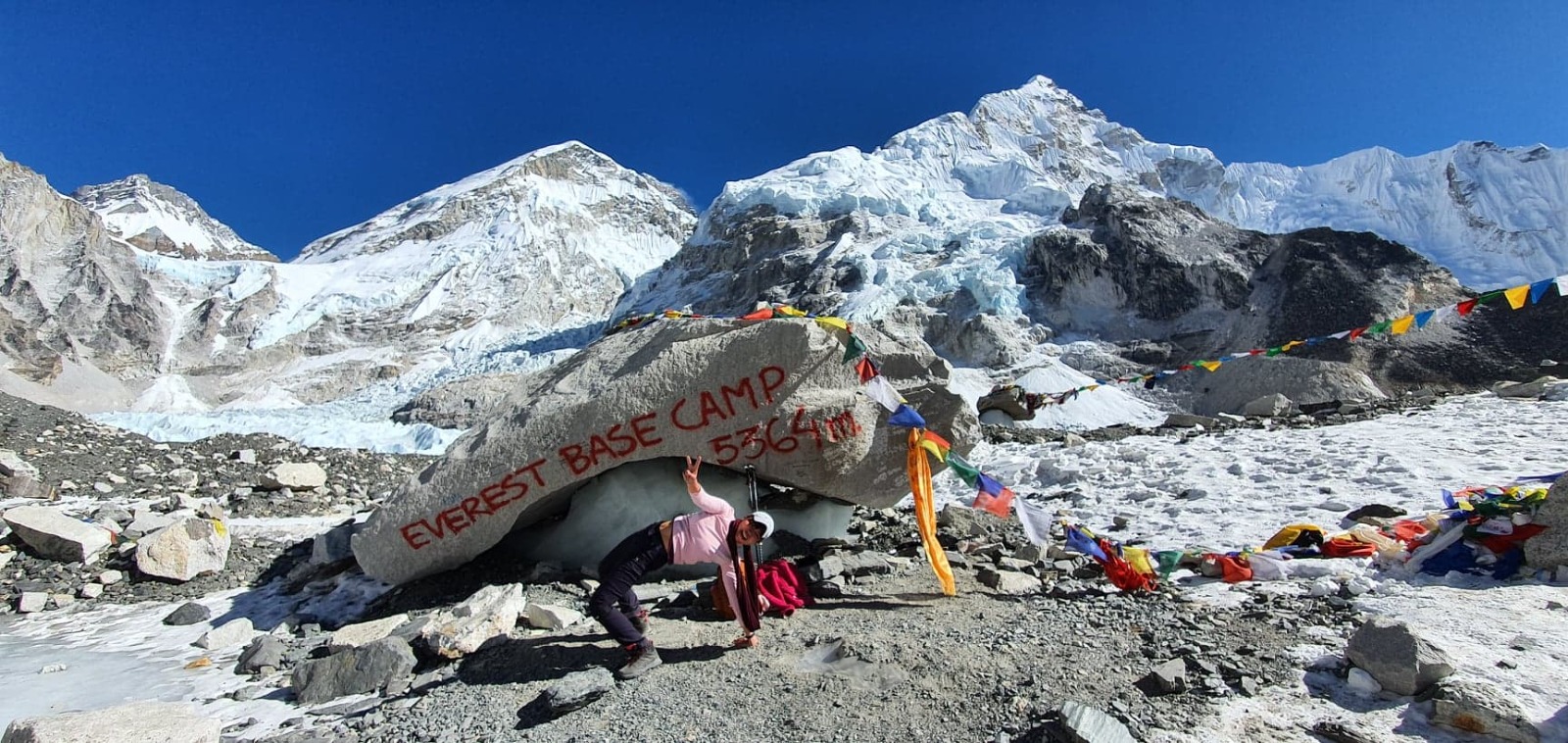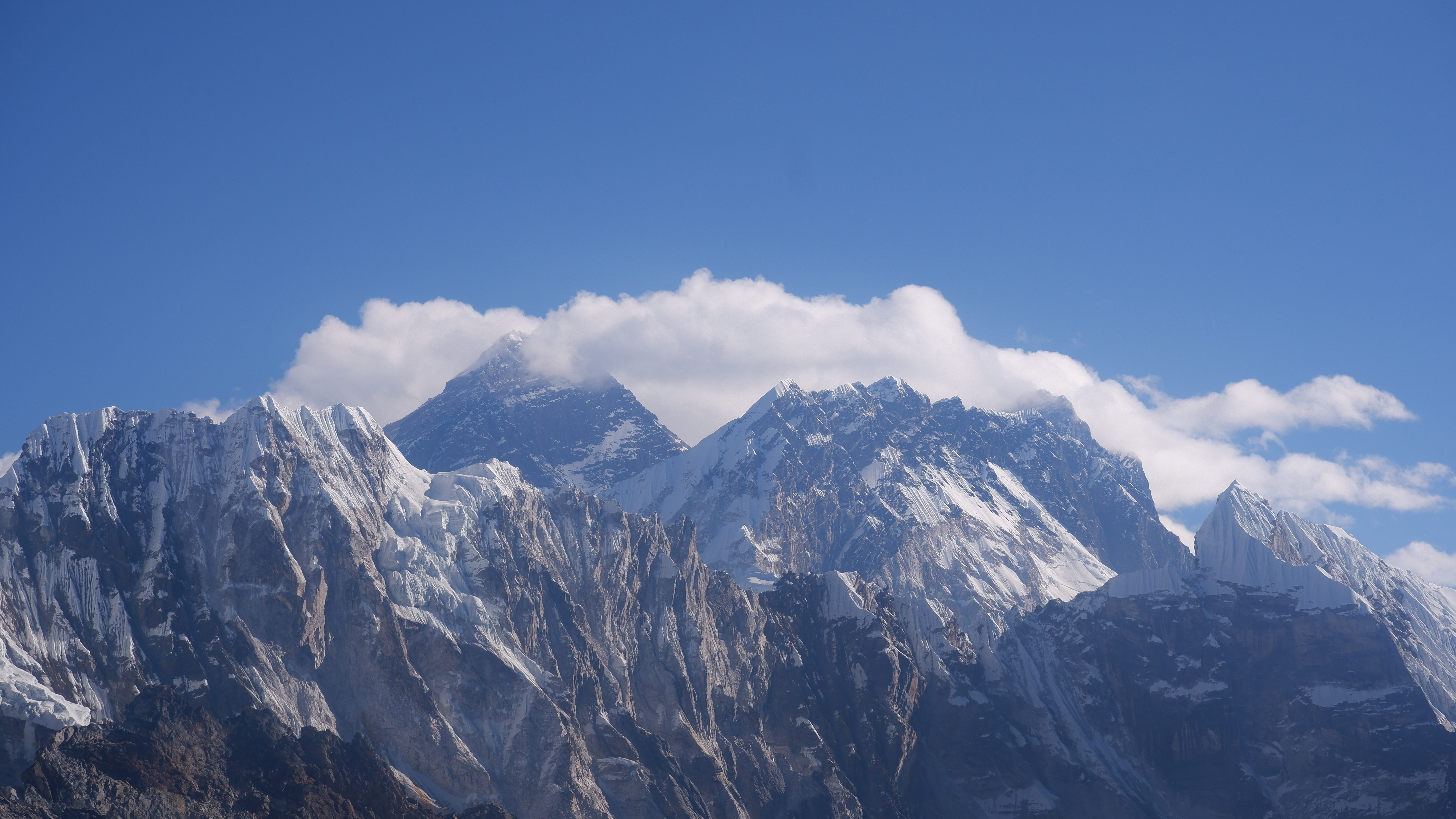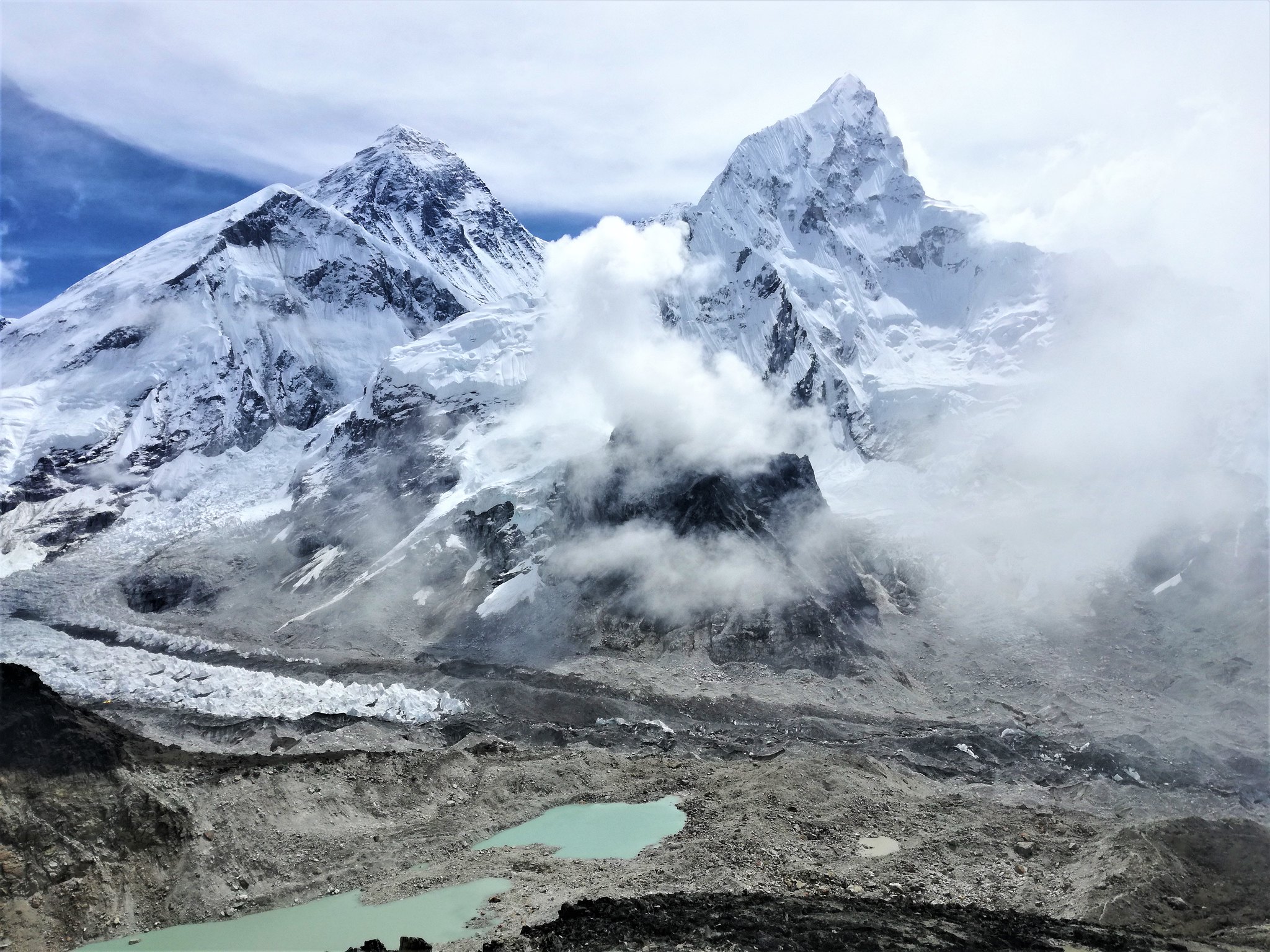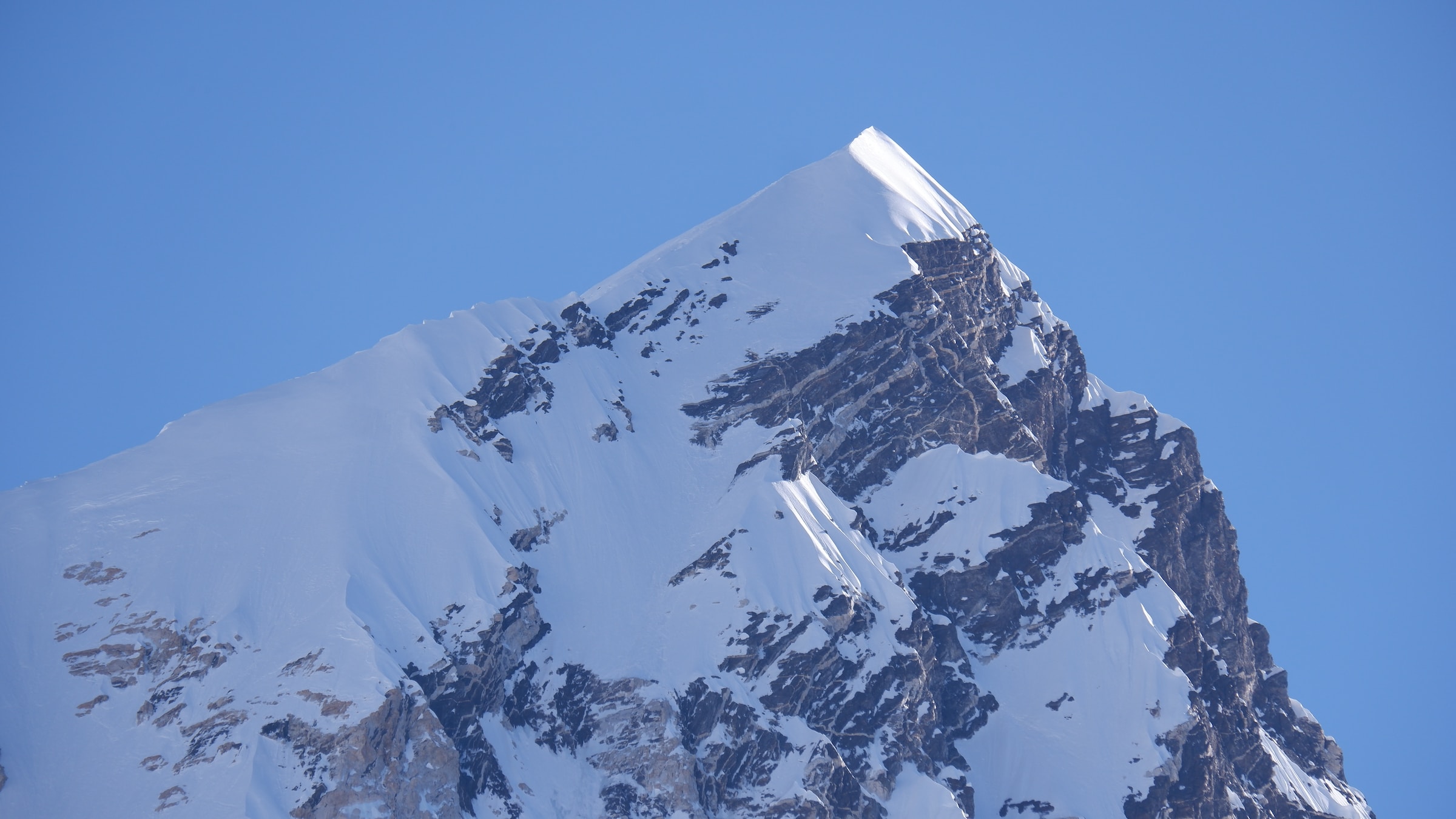Everest Base Camp Trek: A Journey to the Top of the World
Set about on a journey that unveils the magnificent heights of the world's tallest peak Mt. Everest (8848m) alongside the rich culture and traditions of Nepal. Situated in the lap of the mighty Himalayas, Everest Base Camp offers the unbelievable scenery of Pumori, Lhotse, Nuptse, Lobuche and other mountains as well as the legendary Mount Everest itself.
The Everest journey leads you through the beautiful Khumbu valley, allowing trekkers to experience the colossal beauty of surrounding Sagarmatha National Park and the incredible natural grandeur along the trail. Challenge yourself to trek through rugged landscapes and suspension bridges, and encounter diverse climatic conditions, ranging from rhododendrons to oak forests.
Everest Base Camp demands more than just physical endurance; it requires mental resilience and proper gear. This onerous expedition calls for diligent preparation, enough acclimatization, and a heartfelt appreciation for nature's frailty. Now, let's delve into the prevalence of altitude sickness on theEverest Base Camp trek.

Altitude Sickness on Everest Base Camp Trek
Altitude sickness on Everest Base Camp Trek is a major concern that can affect anyone who ascends to higher altitudes immediately such as the breathtaking Everest Base Camp. Altitude sickness also known as acute mountain sickness (AMS), is generally caused by a rapid ascent to high altitudes and is most common in people who climb or ascend more than 1,000 meters (3,280 feet) in a day. Altitude sickness during Everest Base Camp can range from mild to severe and if left untreated can even lead to major health issues like High altitude Cerebral Edema (HACE) and High Altitude Pulmonary Edema (HAPE).
Typically, the Everest journey commences from Lukla at an elevation of 2,600m and takes you to a high point of just over 5,500m at Kala Patthar, the entire trek is tremendous to conclude. In between as the elevation increases lack of oxygen level at the elevated terrain leads to a significant impact on the human body.
The foremost symptom of Everest Base Camp altitude sickness is a headache which can be accompanied by nausea, dizziness, fatigue, a loss of appetite, difficulty sleeping, blurry vision, difficulty breathing, a rapid heart rate, and tiredness.
As the elevation rises, the symptoms of altitude sickness on Everest Base Camp become more extreme. If you experience any of these symptoms it’s important to take instant action by informing our professional guide, they will help you with the conditions either or seek medical help
Luckily, there are several steps to prevent altitude sickness while trekking in the Everest Region.
Recognizing Altitude Sickness: Signs and Symptoms
During Everest Base Camp Trek, altitude sickness is a serious health concern as it takes the trekkers above 5000m. Preparing and Understanding the consequences before embarking on a journey is most crucial. If the journey overall commences with great preparation, then there would be a chance to be aware of symptoms that may be experienced while ascending to the high terrain.
The seriousness of the Everest altitude Sickness symptoms can vary from mild soreness to disastrous conditions. Be aware of the signs and symptoms of altitude sickness such as; headaches, nausea, dizziness, loss of appetite, fatigue, tiredness, difficulty in breathing and difficulty sleeping. Likewise, regarding the symptoms you’ll be experiencing on a journey, take the necessary precautions to prevent the condition from getting worse.
Hikers must realise that altitude sickness on the Everest base camp trek affects individuals differently and at diverse speeds. While some efficacy faces up to milder symptoms, others could face severe exhibition like confusion, tightness in the chest, coughing up blood, diminished coordination, difficulty walking straight, or even loss of consciousness.
If you feel any sort of symptoms while traversing then make sure to seek medical attention immediately as this could demonstrate more serious conditions related to high altitude hazards.
Altitude Sickness Prevention at Everest Base Camp

Altitude Sickness in Everest Base Camp Trek usually occurs while your body doesn’t have time to adjust to low oxygen availability higher up in the atmosphere. However, altitude sickness is preventable and treatable. Here’s a listing that everyone should follow while setting foot on the journey.
Ascend slowly
To adjust your body in high altitude terrain, walking and ascending slowly will help you amazingly and slowly adapt to the low oxygen level. Rest a while walking and make your way slowly to the desired destination. This leads to healthy trekking in the Himalayan Everest Region.
Maintaining Hydration Level
One of the important preventive measures to follow throughout the journey. Staying hydrating is the best way to avoid altitude sickness on the EBC trek. Drink plenty of water all the time. Bring yourself a reusable water bottle to refill it.
Effective Acclimatization Period
Along the journey, you’ll need the rest day to adjust to the high elevation. On an acclimatization day, normally there would be short hiking to minimize the level of altitude you’re staying on tonight. The initial acclimatization days are in Namche Bazaar (3400 m), where hikers ascend to Everest View Hotel (3880 m) before returning to Namche for the night. Exploit the rest day by including short walks, as the key to successful acclimatization is climbing to higher elevations and resting at lower ones.
The second acclimatization is normally done in Dingboche (4400 m), where trekkers can hike to the summit of Nagarshan Hill or any optional. After enjoying at least thirty minutes descend back for overnight rest. Acclimatization not only prevents altitude sickness but also assists in muscle recovery and adaptation to varied oxygen levels.
Consume nourishing meals
Trekking to a higher altitude leads to a loss of appetite and end up having less amount of food. So, consuming nutritious meals helps to provide the stamina and power to adjust to higher altitude terrain. So, make sure to have it.
Refrain from consuming alcohol, cigarettes, and tobacco
Consumption of alcohol, cigarettes, and tobacco worsens the condition by dehydrating the body and slowing down the heart, which can lead to altitude sickness. It's strongly counsel to avoid drinking alcohol and smoking during the trek to alleviate these risks. However, upon descending to lower altitudes, where the body has already acclimatized to the higher altitude, moderate alcohol consumption may be allowable.
Medication
Medication is the last step to prevent altitude sickness if it is unavoidable in any conditions. Taking Diamox two days before a trip and during your trip can help prevent altitude sickness. It is a medication typically used to treat glaucoma. But because of the way it works, it can also help prevent altitude sickness. Before taking it, you’ll need a prescription from your doctor to get it.
It’s also crucial to know that you can still get altitude sickness even when taking this medicine. Once you start having symptoms, the medication won’t reduce them. Getting yourself to a lower altitude again is the only effective measure.
Effective Strategies for Treating Altitude Sickness

Treatment for altitude sickness should always take place with an immediate descent back to lower altitudes. Even descending by as little can eventually reduce symptoms and prevent difficulty. Individuals should rest for at least one or two days before continuing their ascent.
The second treatment is using the medication Acetazolamide (Diamox) to treat mild to modest cases of altitude sickness. It usually works by increasing urine output, reducing fluid control in the brain and lungs, and assisting in acclimatization. By a doctor consultation only it can be used.
In more serious cases, oxygen therapy is managed to reinstate oxygen levels in the blood and reduce symptoms like headaches, dizziness, and nausea. Hospitalization may be required if the conditions are at an extreme level. Steroid treatments may be engaged for serious forms of altitude sickness such as high-altitude cerebral oedema (HACE) or high-altitude pulmonary oedema (HAPE).
By executing actual preventive measures, experiencing symptoms early, and seeking prompt medical attention, if necessary, one can surely have an amazing trekking experience at higher altitudes like Everest Base Camp without facing altitude sickness problems.
Expert Guidance for Everest Base Camp Trekkers about Altitude sickness
Before commencing the Everest Base Camp Trek, proper guidance and preparation are needed for everyone seeking adventure. Expert guidance will provide beneficial insight and individualised advice according to their health conditions and high-altitude trekking experience. Most necessary consultation for yourself whether it is possible to trek or not in highly elevated terrain.
Trekking with a reputable company make sure to arrange a professional guide – a knowledgeable guide about altitude sickness helps you throughout the journey. They know how to handle the situation as they had experienced a lot before. Learn with them how to overcome the difficulties during Everest altitude sickness. Will provide information on acclimatization, offer support during emergencies, and assist with the necessary evacuation procedures if required.
With proper preparation and precautions, enjoy a journey immediately with the breathtaking mountain vistas and natural grandeurs that Everest Base Camp Trek has to offer.

Trekking gears for Everest Base Camp Trek
While trekking in the Everest region, it is crucial to pack the right gear and equipment which eases your journey on the rugged trails. Here is the complete essential list of equipment for the Everest base camp trek.
Head Wear
- Warm insulated winter hat / Wooly hat
- Sun hat / Wide-brimmed hat
- Scarf
- Neck gaiter or Fleece Buff (Optional)
- Neoprene face mask (Optional)
- Balaclava / Bally ski mask / Monkey cap (Optional)
- LED Headlamp × 2 and spare batteries
Face/ body care items
- Sunscreen with SPF above 50
- Sunglasses with UV protection × 2 pairs
- Face/body cleansing wipes (biodegradable wipes)
- Moisturizer lotion for face/body
- Lip balm
Hand Wear
- Liner gloves × 2 pairs
- Fleece gloves × 2 pairs
Body Wear
- Hiking shirts × 2 pairs
- Full-sleeved thermal undershirts × 2 pairs
- Fleece jacket
- Waterproof and windproof hooded rain jacket
- Down jacket (thick down jacket for winter treks)
- Polypropylene underwear × 5-6 pairs
- Synthetic material hiking pants × 2 pairs
- Long johns × 2 pairs
- Sweater
- Waterproof jacket and pants
- Lightweight cotton pants
- T-shirt
Foot Wear
- Woollen socks × 6 pairs (thick light socks)
- Lightweight shoes/scandals
- Hiking Boots
Trekking Gears
- Backpack
- Day pack for basics
- Waterproof covers for your bags and packs
- Thermal water bottle (hydration bladder often freezes in winter)
- Sleeping bag (rated at least 0°C for summer and -15° for winter)
- Water purification tablets, drops or portable water purifier/filter bottles or, gadgets
- Trekking pole
- Crampons
- Large plastic bags and stuff sacks
Personal Toiletries
- Medium size towel
- Toothbrush
- Toothpaste
- Biodegradable bar soap
- Deodorant
- Nail clippers
- Small mirror
- Toilet papers
- Shampoo
Personal accessories
- Money
- Watch
- Cell phone
- Camera
- Lighter
- Pocket knife
Extra items
- First aid kit
- Extra passport photos and photocopies of passport Travel insurance documents
- Notebook and pen
- Books
- Personal entertainment
- Binoculars
- International electrical adapter
Conclusion
Everest Base Camp Altitude Sickness is the major concern that all trekkers should be cleared of before heading on the journey. With adequate preparation, understanding the risk factors and knowing the actual symptoms of altitude sickness, the journey will undoubtedly become easy and enjoyable.
Hope the above information will help you to reach out to the actual answers to questions about altitude-related that you have been wondering about for so long. Pay utmost attention to all the information about altitude sickness and get an incredible experience that changes your life






